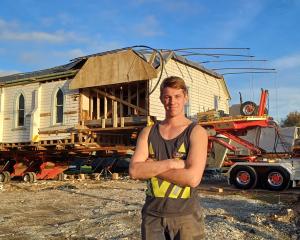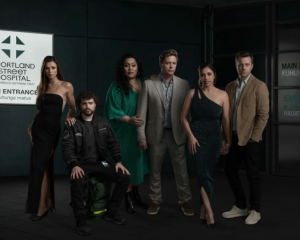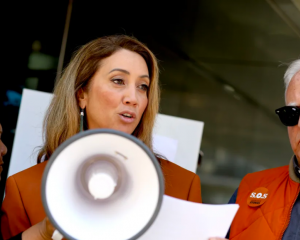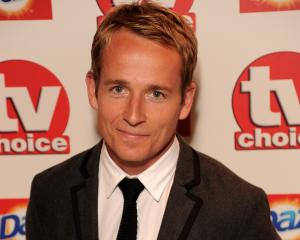
Some years later I discovered the film adaptation Clue, which, despite all reservations one might reasonably have about a film based on a board game, is a delightfully camp cult classic which I highly recommend.
And Then There Were None (available to view on Lightbox) is like a version of Clue that takes itself seriously. Based on the Agatha Christie novel of the same name (first published in 1939 under a most unfortunate original title), the three-part miniseries is a classic which-one-of-us-is-the-killer murder mystery.
Eight people are summoned to a big house on a small island. They are a diverse collection of characters: the doctor (Toby Stephens), the prim secretary (Maeve Dermody), the judge (Charles Dance), the toffish playboy (Douglas Booth), the detective (Burn Gorman), the spinster (Miranda Richardson), the general (Sam Neill) and the smoulderingly handsome but unabashedly self-serving cynic (Aidan Turner).
Once the guests arrive on the island, disconcerting puzzles abound. The grizzled boatman who has brought them from the mainland refuses to accompany his passengers as far as the house, but pauses to stare forebodingly after them. The hosts, Mr and Mrs U.N. Owen, are mysteriously absent. Guests are not allowed in the basement, a rule enforced by servant Mrs Rogers (Anna Maxwell Martin) with creepy blank-faced determination. And the background music carries an air of ominous suspense.
The guests believe they have come to the island for various reasons - as a medical consultant, as a historian, to do a lot of cocaine, etc - but as the evening progresses it becomes clear that someone may have gathered them for reasons they have not guessed at ... murderous reasons.
The show is almost worth watching for purely aesthetic reasons. The 1930s mansion setting is a visual feast in itself - the art deco lamps, the china, the carved mantelpieces, the dinner gong! (Why hadn't it occurred to me until now that my house was lacking a gong?)
Certain aspects of the characters and plot feel somewhat cliche, but that's to be expected when the source material is a classic of its genre. And Then There Were None is the most popular and critically acclaimed of Christie's novels, and for good reason. The mystery is still intriguing and clever enough to hold up well today, and with a top-shelf cast, this production absolutely does it justice.












